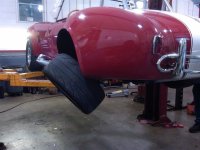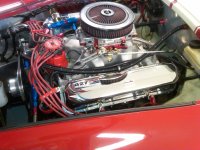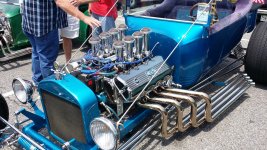Hey Jackie
Just looking at the pictures and reading descriptions of the hotrods that you, Al Nyhus and others build is scary !
I find it all very interesting but even when I was a young man, I would have never ventured into such even if I could have afforded it. State of the art in the engines, transmissions, chassis, and other parts of these street monsters today is amazing.
Just think; all these modern day, CNC manufactured race engines are direct descendants of the basic configuration of Henry Ford's V-8 ! Eight cylinder, Y configuration V-8's. Isn't that ironic and amazing? Old Henry was way ahead of his time.
Keep up the good work, I appreciate all the pictures and articles you share with us on BR Central.
Later,
Gene Beggs
Oh, BTW, is that 540 ci block in your car basically what they use to build top fuel dragsters?












